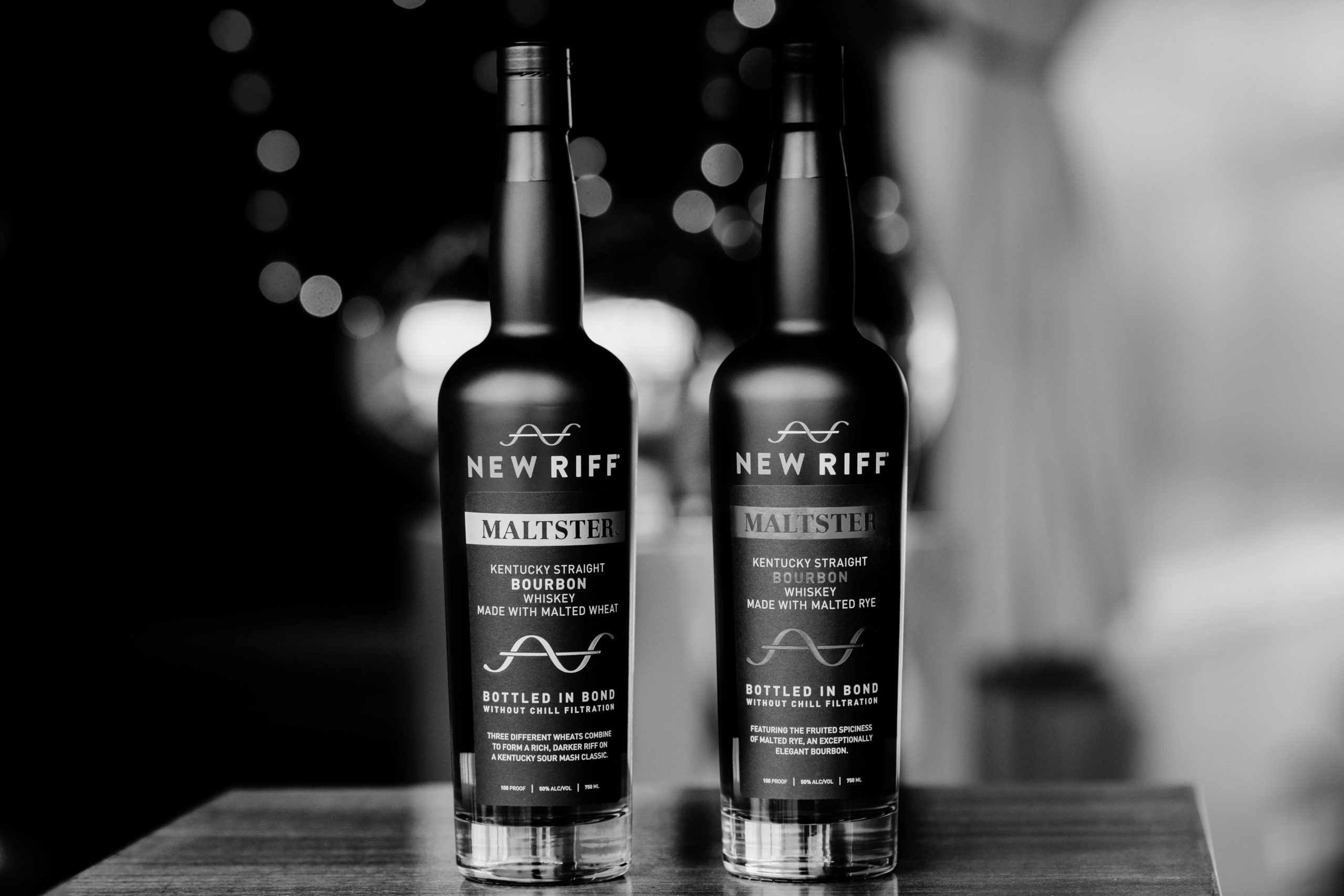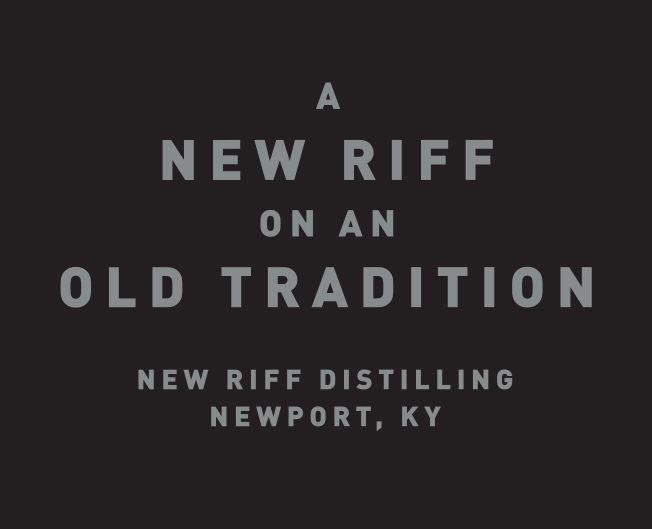 Have you ever wondered what truly makes Bourbon different from other dark spirits? If you think every liquor is the same, think again.
Have you ever wondered what truly makes Bourbon different from other dark spirits? If you think every liquor is the same, think again.
Whiskey comes in many forms, each with their own unique distinctions that set them apart from the others. Bourbon is one of the most common American versions of the dark spirit. Just like every other type of whiskey, Bourbon is also produced in its unique way.
For those who are curious to discover the difference between whiskeys and Bourbon, New Riff has you covered. Read on to discover what truly makes Bourbon, Bourbon.
Who Defines Bourbon Whiskey?
The legal requirements for distilling Bourbon are defined under the United States Code of Federal Regulations. Basically, the defining factor that makes Bourbon a unique whiskey is the law. The Federal Standards of Identity for Bourbon state determine what is and what isn’t Bourbon.
For a whiskey to be considered Bourbon, its mash – the mixture of grains from which the product is distilled – must contain at least 51% corn. The rest of the mash is usually filled out with rye or wheat, and malted barley. However, this mash must also be distilled at no higher than 160 proof and put into a barrel at no higher than 125 proof. No additives must be added to the mash as well.
Additionally, the distilled Bourbon must be aged in new charred oak barrels. Though the law doesn’t specify the species of oak, most distilleries use white oak because it is most suited to building a secure, watertight barrel..
It gets even more complicated than this. To be considered “straight Bourbon,” it must be aged for a minimum of two years in new charred oak containers. If it is aged for less than four years, it must have an age statement somewhere on the bottle that tells buyers how long it was aged.
Some Bourbon may also be bottled in bond, the label for American-made distilled spirits that are aged and bottled according to certain federal standards. Many enthusiasts see this label as an endorsement of quality.
When you purchase a bottle of straight Bourbon that doesn’t state how old it is, you’re likely getting Bourbon that is at least four years old but not much older.
Production Basics
The Bourbon industry has undergone significant development and growth over the years. Bourbon distilleries produce Bourbon that is of great quality and value. However, many new enthusiasts still don’t know how Bourbon is made. Here are the basics; read on to learn the details.
Mash bill of at least 51 percent corn
As stated above, Bourbon has to have a mash bill of at least 51 percent corn. Other grains that make up Bourbon can include rye, wheat, or malted barley.
Aged for at least two years for “straight”
Straight Bourbon has to be aged in new charred oak barrels for at least two years.
Distillation proof of no more than 160
Bourbon must be distilled no higher than 160 proof, 80 percent alcohol-by-volume. Some whisky allows up to 90 percent alcohol-by-volume, but Bourbon does not. 160 proof Bourbon is as high as the proof can reach off the still.
Barreled no higher than 125 proof
Bourbon has to be barreled at no more than 125 proof.
Bottled no less than 80 proof
Bourbon has to be bottled at no less than 80 proof, or a minimum of 40 percent alcohol-by-volume.
Bourbon’s Origins
The true origin of Bourbon’s creation is a vague answer. The invention of Bourbon is generally credited to Rev. Elijah Craig, coming up with the idea of aging corn whiskey in charred oak barrels back in 1789.
However, historical facts that support this story can be tough to come by. Corn distilleries existed in Kentucky prior to 1789, so it’s possible that Craig was one of the many distillers who helped transform corn moonshine into the modern-day Bourbon. In the end, Elijah Craig is the man who’s received lasting recognition for inventing Bourbon.
There is an old saying that Bourbon must be made in Kentucky, however, this is a common misconception. “Kentucky Bourbon” is only produced in the state, but Bourbon in fact can be made in any of the 50 American states. Once the overall standards for Bourbon are met, it’s Bourbon. It does not matter in which state it’s produced.
Bourbon production is similar to the processes of other whiskeys in that Bourbon improves as it spends more time in the barrel. Whiskey is forced in and out of the barrel’s wood as temperatures fluctuate. This imparts vanilla-like flavors and makes the whiskey have a more complex taste. The layer of charred oak inside the barrel also gives whiskey its dark brown color.
This process cannot go on forever. Because of evaporation, there is less whiskey left in an aging barrel every year. Eventually, the barrel would become empty. If Bourbon spends too much time in a barrel, it can create an unpleasant and woody taste that makes drinking the spirit unfavorable. The key is to figure out when a barrel has matured to perfection without it aging too long. Unlike some other aged spirits, younger Bourbon whiskeys can be very enjoyable for both your taste buds and your wallet.
Single-Barrel Bourbon
When distillers bottle their standard Bourbon, they go to rickhouses where the whiskey is stored and aged. They pull a bunch of barrels to be dumped together in tanks and mixed until the Bourbon matches the flavor profile that is typically bottled. Every barrel tastes slightly different due to small differences in wood and storage location within the rickhouse. Hundreds of barrels can be blended together to get a relatively consistent flavor that matches each batch of Bourbon.
However, single-barrel Bourbon does not get blended at all. The distiller picks out the most distinctive and flavorful barrels from the rickhouse, cuts them each with water to get the correct proof, and sends the Bourbon straight into the bottle. Each bottle you purchase is bound to have its own unique flavors, as every barrel has little idiosyncrasies that make them all unique.
Small Batch Bourbon
When you purchase a single barrel whiskey, you know you’re getting whiskey from one barrel.
In a small batch, you’re simply getting whiskey from a batch that is small. Small batch Bourbon can consist of a blend of anywhere from 2 barrels to 200 or more. The careful selection of similar Bourbon flavor profiles mean that the Bourbon itself is rich in flavor while staying unique to other Bourbons. The term “small batch” is simply a marketing term that suggests quality. Although the small batch standard does not always live up to single barrel Bourbons, they can still be quite delicious. Small batch Bourbon is best for premium purchases and is meant for those who want more individuality in taste without paying a high single-barrel price point.
Bourbon Barrels
Bourbon has to be put into a new charred oak barrel to age. Once the barrel has been used for aging and emptied, it is no longer suitable for ageing Bourbon.
However, there are still many uses for used Bourbon barrels. They are perfect for aging other spirits, and many are sent to Scotland to be used for aging Scotch whisky. Originally, sherry casks were popular for aging Scotch, but the scarcity of sherry casks has made good-quality used Bourbon oak barrels popular in many Scottish distilleries. Bourbon barrels are becoming increasingly popular for aging beers at microbreweries, specifically stouts. Some used Bourbon barrels are re-used in America for whiskey styles (or brandy and rum) that don’t require new oak.
Our Bourbon is Unique
Like many Kentucky distillers, New Riff’s Bourbon follows the practices that have historically given Kentucky Bourbon its unique flavors. We are a new riff on the old tradition of Kentucky Bourbon. Our core Bourbon is a genuinely high-rye, full-bodied whiskey offering a savory, spicy character. From single barrel to small batch, all of our whiskeys are made with the full sour mash Kentucky Regimen, and are aged for four years in 53-gallon toasted and charred new oak barrels.
Whether you prefer our spicy, savory Kentucky Straight Bourbon Whiskey or our sweet and savory Single Barrel Rye, we’ve got just the Bourbon for you. Browse our selection of flagship whiskeys today.
